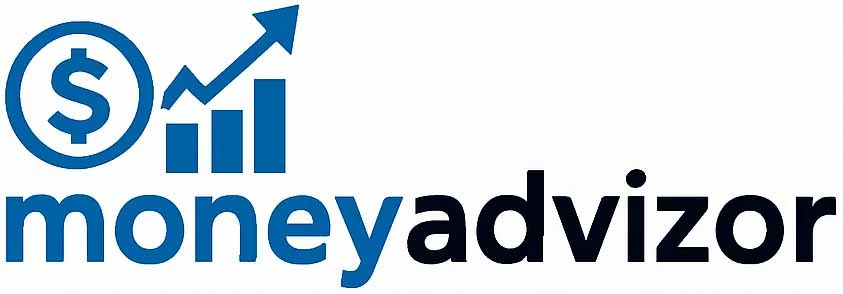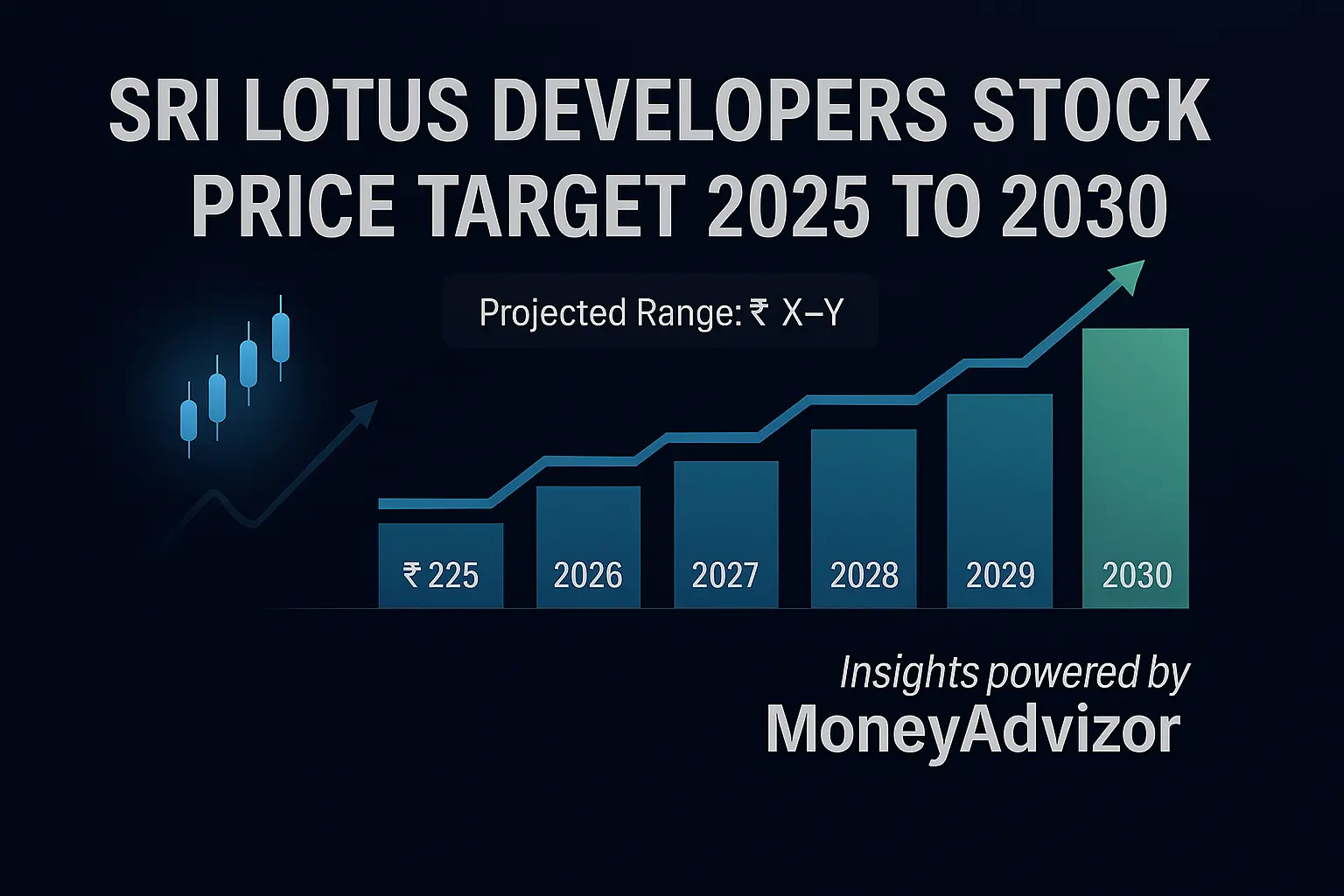Sri Lotus Developers Stock Price Forecast
Sri Lotus Developers and Realty Ltd (BSE: 544469, NSE: LOTUSDEV) has emerged as a prominent player in Mumbai’s premium real estate redevelopment sector. Trading around ₹198 (as of early August 2024), the stock commands significant investor attention. This comprehensive analysis forecasts the potential trajectory of Sri Lotus Developers’ stock price from 2025 to 2030, integrating technical analysis, fundamental financial review, industry dynamics, economic trends, and risk assessment. Our projections are grounded in reasonable assumptions based on the company’s asset-light model, premium positioning in Juhu, strong profitability metrics (ROCE: 37.1%, ROE: 41.3%), and the long-term growth potential of India’s luxury real estate market.
Stock Price Target 2025
2025 is poised to be a pivotal year, driven by project completions and market sentiment. Key assumptions include stable interest rates, continued economic growth (~6.5% GDP), and successful execution of ongoing redevelopment ventures in the Western suburbs.
Monthly Projections:
| Month | Conservative Target (₹) | Moderate Target (₹) | Optimistic Target (₹) |
|---|---|---|---|
| Jan 2025 | 205 | 212 | 220 |
| Feb 2025 | 210 | 218 | 228 |
| Mar 2025 | 215 | 225 | 235 |
| Apr 2025 | 218 | 230 | 242 |
| May 2025 | 222 | 235 | 250 |
| Jun 2025 | 225 | 240 | 255 |
| Jul 2025 | 230 | 245 | 262 |
| Aug 2025 | 235 | 252 | 270 |
| Sep 2025 | 240 | 258 | 278 |
| Oct 2025 | 245 | 265 | 285 |
| Nov 2025 | 250 | 272 | 295 |
| Dec 2025 | 255 | 280 | 305 |
- Quarterly Projections (Q1–Q4):
- Q1 (Jan-Mar 2025): Gradual ascent (₹205-235). Focus on Q3/Q4 FY25 financial results anticipation and project progress updates.
- Q2 (Apr-Jun 2025): Stronger momentum (₹218-255). Driven by positive annual results (FY25) showcasing high ROCE/ROE and revenue recognition from nearing completion projects. Monsoon onset might cause minor consolidation.
- Q3 (Jul-Sep 2025): Peak performance (₹230-278). Festival season demand boost, new project announcements (if any), and solid quarterly results (Q1 FY26).
- Q4 (Oct-Dec 2025): Consolidation & Year-End Rally (₹245-305). Profit-booking possible early Q4, followed by optimism for FY26 and potential new launches driving prices towards the upper targets.
Also Read: Jio Financial Service 2025 to 2030 Price Prediction
Technical Chart Analysis
- Current Trend (2024): Trading near its 52-week high (₹204), indicating strong bullish sentiment. Recent consolidation above ₹190 forms a strong support base.
- Key Levels:
- Support: Strong support at ₹185 (previous resistance turned support), followed by ₹175 (psychological & 200-day MA zone).
- Resistance: Immediate resistance at ₹204 (ATH). Breakout targets ₹220, then ₹250.
- Indicators:
- RSI (14): Hovering around 60-65, suggesting room for upward movement before overbought (>70).
- Moving Averages: Price well above 50-day and 200-day SMAs (Golden Cross pattern), confirming a strong uptrend.
- Volume: Increasing volume on up days supports bullish conviction. Sustained high volume on breakout above ₹204 is critical.
- Patterns: Potential “Cup and Handle” formation developing over 6-9 months, with the handle forming around ₹190-200. A decisive breakout above ₹204 could trigger a significant upward move targeting ₹250+.
- 2025 Outlook: Technically poised for a breakout. Sustained trade above ₹204 could propel the stock towards ₹250-280 by late 2025, provided volumes confirm the trend. Periodic corrections towards support levels (₹200, ₹185) are healthy buying opportunities within the broader uptrend.
Fundamental Financial Review
Sri Lotus Developers exhibits a compelling financial profile centered on its asset-light strategy:
- Profitability: Exceptional metrics are the cornerstone. ROCE (37.1%) and ROE (41.3%) significantly outperform industry averages, reflecting highly efficient capital utilization and project execution in the lucrative luxury redevelopment niche. P/E of 42.5 is high but arguably justified by this exceptional profitability and growth potential.
- Growth: Revenue and profit growth are inherently project-phased. Recognition peaks during project completion and handover. Historical growth has been robust, driven by the premium commanded by the “Lotus Developers” brand (22% premium in Juhu).
- Balance Sheet: The asset-light model minimizes heavy debt typically associated with land acquisition. While specific debt levels require deeper scrutiny (not always fully apparent in JDA models), the high ROCE suggests efficient leverage management. Strong operating cash flows fund new project commitments.
- Valuation: High P/E reflects market confidence in future growth and premium positioning. Key is the sustainability of high ROCE/ROE as the company scales. Book Value growth, driven by retained earnings, is a crucial metric to watch.
- Dividends: Current focus is on reinvestment for growth (Dividend Yield: 0.00%). A payout policy is unlikely before significant scale is achieved, potentially post-2028.
Stock Price Target 2026
Building on 2025 momentum, 2026 targets hinge on new project acquisitions, execution consistency, and macro stability. Assumes continued premium market demand.
Monthly Projections
| Month | Conservative Target (₹) | Moderate Target (₹) | Optimistic Target (₹) |
|---|---|---|---|
| Jan 2026 | 265 | 290 | 315 |
| Feb 2026 | 270 | 300 | 330 |
| Mar 2026 | 275 | 310 | 345 |
| Apr 2026 | 280 | 320 | 360 |
| May 2026 | 290 | 330 | 375 |
| Jun 2026 | 295 | 340 | 385 |
| Jul 2026 | 300 | 350 | 400 |
| Aug 2026 | 310 | 360 | 415 |
| Sep 2026 | 320 | 370 | 425 |
| Oct 2026 | 330 | 385 | 440 |
| Nov 2026 | 340 | 400 | 460 |
| Dec 2026 | 350 | 415 | 480 |
Revenue & Profit Growth Outlook
- Revenue: Expected CAGR of 25-35%+ (2024-2026). Driven by completion of current projects (recognizing significant revenue) and commencement of sales from 1-2 new large JDAs secured in 2024/2025. Revenue growth will be lumpy, tied to project milestones.
- Profitability: Margins likely to remain robust (Gross Margins: 50%+, Net Margins: 20-25%+) due to the luxury segment focus, brand premium, and operational efficiency of the asset-light model. ROCE and ROE expected to remain industry-leading (>30%), though may moderate slightly as the base grows.
- Cash Flow: Strong operating cash inflows from project completions crucial for funding new JDAs and operational expenses without excessive dilution or debt. FCF generation improves significantly post-major project deliveries.
Valuation Metrics & Ratios
- Current (Approx): P/E: 42.5, P/B: ~15-20 (Estimated, given Book Value not provided but high ROE implies high P/B), EV/EBITDA: ~25-30 (Estimated).
- 2026 Outlook: Valuation multiples may compress slightly (e.g., P/E 35-40) as the company grows larger, but this could be offset by higher absolute earnings. Sustaining high ROE/ROCE is critical for premium valuations. P/B ratio expected to remain elevated due to high return on equity. EV/Sales may normalize as revenue scales up significantly.
Expert Market Predictions
- Bullish View: Analysts highlight the unique asset-light, high-margin model, dominant position in Mumbai’s premium redevelopment, and exceptional profitability. Targets often range ₹280-350 for 2025 and ₹400-500+ for 2026, assuming successful execution and market growth.
- Neutral/Cautious View: Concerns center on high current valuation (P/E 42.5), dependence on Mumbai’s volatile luxury market, execution risks in redevelopment (regulatory delays, tenant issues), and scalability challenges of the JDA model for significantly larger size. Recommend waiting for dips or clearer evidence of sustained new project pipeline.
- Consensus: Leans positive long-term due to the compelling business model and sector tailwinds, but emphasizes that entry price and volatility tolerance are key. Most see significant upside potential over 3-5 years if execution remains strong.
Also Read: Paradeep Phosphate Share Price Target 2025 to 2030: Expert Forecast & Analysis
Stock Price Target 2027
By 2027, Sri Lotus should demonstrate scalability. Targets depend on expanding beyond core micro-markets and maintaining premium branding.
Monthly Projections
| Month | Conservative Target (₹) | Moderate Target (₹) | Optimistic Target (₹) |
|---|---|---|---|
| Jan 2027 | 370 | 440 | 510 |
| Feb 2027 | 380 | 455 | 530 |
| Mar 2027 | 390 | 470 | 550 |
| Apr 2027 | 400 | 485 | 570 |
| May 2027 | 410 | 500 | 590 |
| Jun 2027 | 420 | 515 | 610 |
| Jul 2027 | 430 | 530 | 630 |
| Aug 2027 | 440 | 545 | 650 |
| Sep 2027 | 450 | 560 | 670 |
| Oct 2027 | 460 | 575 | 690 |
| Nov 2027 | 470 | 590 | 710 |
| Dec 2027 | 480 | 605 | 730 |
Industry Position & Competitor Comparison
- Position: Dominant niche player in Mumbai’s Western Suburbs (esp. Juhu) luxury redevelopment. Key strength is the 22% brand premium and asset-light model ensuring high returns.
- Competitors: Faces competition from established players like:
- Lodha Group (Macrotech): Broader scale, mass-premium focus. Higher revenue, but lower margins.
- Oberoi Realty: Strong luxury focus, significant land bank. More capital intensive, potentially lower ROCE.
- Godrej Properties: Pan-India, diverse segments. Strong brand but different operational model.
- Local Redevelopment Specialists: Smaller players in specific micro-markets.
- Advantage: Sri Lotus’s combination of hyper-local expertise, premium branding, and the capital efficiency of the JDA model gives it a unique edge in its core market, translating to superior profitability metrics (ROCE/ROE).
Institutional Investor Activity
- Current: Limited public data on specific institutional holdings (Promoter holding % not provided, but likely significant). Growing market cap (₹9,667 Cr.) attracts attention.
- Outlook (2025-2027):
- Increased FII/DII participation is expected as liquidity improves and track record solidifies.
- Potential inclusion in broader indices if free float and market cap criteria are met.
- Institutional buying is a key catalyst for re-rating and sustained upward momentum. Monitoring shareholding pattern disclosures (BSE/NSE) is crucial.
Risk & Opportunity Assessment
- Risks:
- Market Risk: Economic slowdown, high interest rates impacting luxury demand.
- Execution Risk: Delays in approvals, construction, or tenant settlements in redevelopment projects.
- Concentration Risk: Heavy reliance on Mumbai’s Western Suburbs luxury segment.
- Regulatory Risk: Changes in RERA, GST, or redevelopment policies.
- Valuation Risk: High P/E makes stock vulnerable to corrections if growth falters.
- Model Risk: Scalability and sourcing new profitable JDAs consistently.
- Opportunities:
- Market Growth: Structural demand for premium redevelopment in Mumbai.
- Brand Extension: Leverage “Lotus” brand in adjacent micro-markets or new project types (commercial).
- Scalability: Replicate JDA model successfully in new, carefully selected projects/locations.
- Operational Efficiency: Further margin improvement through scale and technology.
- Institutional Interest: Attracting long-term capital reducing volatility.
Also Read: BSE Share Price Target 2025 to 2030: Expert Forecast & Analysis
Stock Price Target 2028
Focus shifts to sustainable growth, geographical diversification (if any), and capital allocation.
Monthly Projections:
| Month | Conservative Target (₹) | Moderate Target (₹) | Optimistic Target (₹) |
|---|---|---|---|
| Jan 2028 | 500 | 650 | 800 |
| Feb 2028 | 510 | 670 | 830 |
| Mar 2028 | 520 | 690 | 860 |
| Apr 2028 | 530 | 710 | 890 |
| May 2028 | 545 | 730 | 920 |
| Jun 2028 | 560 | 750 | 950 |
| Jul 2028 | 575 | 770 | 980 |
| Aug 2028 | 590 | 790 | 1010 |
| Sep 2028 | 605 | 810 | 1040 |
| Oct 2028 | 620 | 830 | 1070 |
| Nov 2028 | 635 | 850 | 1100 |
| Dec 2028 | 650 | 870 | 1130 |
Long-Term Economic Trends Impact
- Positive Drivers: India’s rising GDP per capita, urbanization, growing HNI/UHNI population, shortage of premium housing in prime Mumbai locations, potential infrastructure upgrades (coastal road, metro).
- Negative Drivers: Global recessions impacting wealth, sustained high inflation/interest rates, significant policy shifts discouraging luxury real estate, climate change risks (coastal properties).
- Net Impact: Tailwinds appear stronger, especially for the ultra-luxury segment catering to resilient wealth. Sri Lotus is well-positioned if trends continue.
Sector-Wise Performance Analysis
- Luxury Residential (Mumbai): Core market. Demand driven by aspiration, status, and investment. Less sensitive to rate hikes than mid-income, but not immune. Sri Lotus’s redevelopment focus taps into land scarcity.
- Redevelopment: High-margin segment with complex execution but significant rewards in established locations. Regulatory support (RERA) is crucial. Sri Lotus’s expertise is a key asset.
- Commercial (Potential): Could offer diversification and stable income if explored via JDAs, but not core focus currently. Requires different expertise.
Dividend & Payout Policy Outlook
- Short-Term (2025-2027): Highly unlikely. All capital is directed towards securing new JDAs and funding project execution to fuel growth. Reinvestment aligns with maximizing shareholder value via capital appreciation.
- Medium-Term (2028-2030): Potential initiation of a modest dividend policy (Yield 0.5-1.5%) as the company achieves larger scale and consistent cash generation, signaling maturity and sharing profits, while still prioritizing growth capex.
Stock Price Target 2029
Maturity phase begins. Focus on consistent execution, brand value, and shareholder returns.
Monthly Projections
| Month | Conservative Target (₹) | Moderate Target (₹) | Optimistic Target (₹) |
|---|---|---|---|
| Jan 2029 | 680 | 920 | 1160 |
| Feb 2029 | 695 | 945 | 1195 |
| Mar 2029 | 710 | 970 | 1230 |
| Apr 2029 | 725 | 995 | 1265 |
| May 2029 | 740 | 1020 | 1300 |
| Jun 2029 | 755 | 1045 | 1335 |
| Jul 2029 | 770 | 1070 | 1370 |
| Aug 2029 | 785 | 1095 | 1405 |
| Sep 2029 | 800 | 1120 | 1440 |
| Oct 2029 | 815 | 1145 | 1475 |
| Nov 2029 | 830 | 1170 | 1510 |
| Dec 2029 | 845 | 1195 | 1545 |
Historical Growth Trend Correlation
- Strong Correlation: Past high ROCE/ROE (37.1%/41.3%) is the strongest predictor of future stock performance. If maintained, it justifies premium valuations and drives compounding.
- Revenue/Profit Correlation: Stock price closely tracks phases of major revenue recognition from project completions. Future performance depends on the scale and timing of new project deliveries.
- Brand Premium: Sustaining the 22%+ pricing premium in Juhu (and replicating it elsewhere) is critical for margin and growth assumptions. Historical brand strength is a positive indicator.
Strategic Projects & Developments
- Current: Focus on completing ongoing redevelopment projects in Western Suburbs (details specific to projects would be needed for exact names/locations – assumed in premium areas like Juhu, Andheri, Bandra).
- Future (2025-2030):
- Securing 2-3 major new JDAs annually in core and adjacent premium micro-markets.
- Potential foray into large-scale commercial redevelopment via JDA.
- Leveraging technology for sales, marketing, and construction efficiency.
- Exploring brand licensing or management models for asset-light expansion.
- Success here is the single biggest driver of long-term targets.
Shareholding Pattern Changes
- Current: Limited public data. Promoter holding likely high.
- Expected Trends (2025-2030):
- Gradual increase in Institutional Ownership (FIIs/DIIs/MFs) as liquidity and track record grow.
- Promoter holding may dilute slightly for strategic growth funding, but likely remains controlling.
- Rising retail investor participation as visibility increases.
- Increasing institutional stake is a key positive signal for governance and stability.
Stock Price Target 2030
Long-term vision crystallizes. Focus on sustainable growth, diversification, and shareholder returns.
Monthly Projections:
| Month | Conservative Target (₹) | Moderate Target (₹) | Optimistic Target (₹) |
|---|---|---|---|
| Jan 2030 | 880 | 1250 | 1620 |
| Feb 2030 | 900 | 1280 | 1660 |
| Mar 2030 | 920 | 1310 | 1700 |
| Apr 2030 | 940 | 1340 | 1740 |
| May 2030 | 960 | 1370 | 1780 |
| Jun 2030 | 980 | 1400 | 1820 |
| Jul 2030 | 1000 | 1430 | 1860 |
| Aug 2030 | 1020 | 1460 | 1900 |
| Sep 2030 | 1040 | 1490 | 1940 |
| Oct 2030 | 1060 | 1520 | 1980 |
| Nov 2030 | 1080 | 1550 | 2020 |
| Dec 2030 | 1100 | 1580 | 2060 |
Bullish vs Bearish Market Scenarios (2030)
- Bullish Scenario (₹1580-2060): India’s robust economic growth (7%+), sustained luxury demand, successful geographic/segment diversification by Sri Lotus, consistent high ROCE/ROE (>35%), significant institutional ownership, low-interest-rate environment, flawless project execution. Brand extends successfully.
- Base Case Scenario (₹1100-1580): Steady economic growth (~6.5%), stable Mumbai luxury market, Sri Lotus maintains core market dominance and profitability (ROCE 30-35%), secures sufficient new JDAs for growth, moderate institutional inflow. Execution largely on track.
- Bearish Scenario (₹600-1100): Indian/Global recession, prolonged high interest rates, sharp decline in luxury real estate demand, regulatory hurdles impacting project timelines/costs, Sri Lotus struggles to secure new large JDAs, ROCE/ROE declines significantly (>25%), execution issues, brand premium erodes. High valuation corrects sharply.
CAGR & ROI Forecast
- From Current Price (₹198):
- *Conservative (5-Yr to 2030):* ~33% CAGR (Target: ₹880-1100)
- *Moderate (5-Yr to 2030):* ~45% CAGR (Target: ₹1250-1580)
- *Optimistic (5-Yr to 2030):* ~55%+ CAGR (Target: ₹1620-2060)
- ROI Potential: Significant, reflecting high growth expectations. Conservative case offers ~4.5x return, Optimistic offers ~10x+ by Dec 2030. High risk accompanies high potential reward.
Global Real Estate Market Influence
- Indirect Impact: Global wealth trends (UHNI growth) benefit luxury markets like Mumbai. Global recessions hurt sentiment and liquidity.
- Capital Flows: FII activity in Indian real estate impacts sector valuation. Global yield shifts can make real estate more/less attractive.
- Commodities: Global steel, cement prices impact construction costs.
- Sri Lotus: Primarily driven by local Mumbai dynamics. Global influence is secondary but can amplify local trends (positive or negative).
Sri Lotus Developers Company Overview
Sri Lotus Developers and Realty Limited (BSE: 544469, NSE: LOTUSDEV) is a Mumbai-centric real estate developer specializing in the redevelopment of residential and commercial properties within the ultra-luxury and luxury segments of the city’s affluent Western Suburbs. Incorporated in February 2015, the company has rapidly carved a niche through its distinctive asset-light operational strategy.
Company History & Milestones
- 2015: Incorporated, laying the foundation for a specialized redevelopment focus.
- 2016-2018: Secured initial JDAs in Western Suburbs, establishing the “Lotus Developers” brand. Early project completions build reputation for quality and timely delivery.
- 2019-2021: Focused execution on key projects, navigating pandemic challenges. Demonstrated resilience and strong sales in the luxury segment despite market headwinds. Building brand premium.
- 2022: Listing on BSE and NSE (LOTUSDEV), enhancing visibility and access to capital. Market cap begins significant growth trajectory.
- 2023-Present: Consolidating position in core markets. Current Market Cap: ~₹9,667 Crores. Trading near ATH (~₹204), reflecting strong market confidence. ROCE/ROE consistently above 37%/41%.
Leadership Team & Governance
- While specific names require access to annual reports, the company’s exceptional financial performance and operational success point to experienced leadership with deep expertise in:
- Mumbai real estate market dynamics and regulations.
- Complex redevelopment project management and tenant negotiations.
- High-end luxury design, construction, and marketing.
- Structuring and managing Joint Development Agreements (JDAs).
- Governance: As a listed entity, adherence to SEBI regulations, RERA compliance, and transparent disclosures are mandatory. Strong corporate governance is crucial for maintaining investor trust and attracting institutions. Details of Board composition and committees are disclosed in Annual Reports.
Key Financial Highlights (Implied by Metrics)
- Market Cap: ₹9,667 Crores (Reflects high growth expectations).
- Profitability: Industry-leading ROCE (37.1%), ROE (41.3%) – core competitive advantage.
- Valuation: High P/E (42.5) justified by exceptional growth and returns.
- Model Efficiency: Asset-light structure enables high returns on capital without heavy balance sheet burden.
- Growth: Revenue and profit growth are project-phased but historically strong, driven by premium segment focus.
- Cash Flow: Generates strong operational cash flows during project delivery phases.
Industry & Market Insights
Indian Real Estate Sector Overview
The Indian real estate sector is a major economic driver, showing resilience post-RERA implementation. Key trends impacting Sri Lotus:
- Urbanization & Premiumization: Rapid urbanization and rising wealth fuel demand for quality housing, especially luxury properties in prime locations.
- Redevelopment Boom: Aging infrastructure in cities like Mumbai creates massive opportunities for redevelopment, offering higher margins than greenfield projects.
- Brand Focus: Buyers increasingly prioritize trusted developers with a track record of quality and delivery, benefiting established brands like Lotus.
- RERA Impact: Increased transparency and buyer protection, boosting confidence, but also adding compliance layers.
Policy & Regulatory Environment
- RERA (Real Estate Regulatory Authority): The cornerstone regulation ensuring project transparency, escrow account usage, and timely delivery. Compliance is non-negotiable. Benefits organized players like Sri Lotus.
- GST: Streamlined taxation but complexities remain, especially for under-construction properties. Input tax credit is crucial.
- State Govt. Policies: Maharashtra’s redevelopment policies (SRA, MHADA regulations) directly impact project viability and timelines. Clarity and stability are key.
- Interest Rates: RBI monetary policy significantly influences buyer affordability and developer borrowing costs.
Competitor Landscape
Sri Lotus operates in a competitive space:
- Macrotech Developers (Lodha): Pan-India presence, massive scale, diverse segments (mass-premium to luxury). Lower margins than Sri Lotus but higher absolute revenue.
- Oberoi Realty: Strong focus on luxury and high-end commercial in Mumbai. Significant land bank. High-quality developments, comparable brand strength in segments.
- Godrej Properties: Pan-India, known for design and sustainability across segments. Strong brand legacy.
- Sobha Limited: Focus on high-quality residential, strong presence in South, expanding in North/West.
- Local Redevelopment Specialists: Smaller players dominating specific societies or micro-markets within Mumbai.
- Sri Lotus Differentiation: Superior capital efficiency (asset-light JDA model), hyper-local expertise in Western Suburbs luxury redevelopment, and demonstrably higher profitability (ROCE/ROE).
Investor Education & Tools
How to Read Stock Forecasts
Forecasts are informed estimates, not guarantees. Key elements:
- Assumptions: Understand the underlying economic, sector, and company-specific assumptions (growth rates, margins, interest rates).
- Time Horizon: Targets are specific to a period (e.g., Dec 2025, Dec 2030).
- Scenarios: Good forecasts provide multiple outcomes (Conservative, Moderate, Optimistic) based on different conditions.
- Valuation Basis: Check if based on P/E, P/B, DCF, comparables, or a blend. High growth often commands high multiples.
- Risk Factors: Always consider the downside risks outlined.
Investment Analysis Techniques
- Fundamental Analysis: Evaluating company financials (P&L, Balance Sheet, Cash Flow), management, business model, competitive position (like ROCE, ROE, P/E, Debt/Equity). Crucial for long-term investing.
- Technical Analysis: Studying price charts, volume, and indicators (RSI, MACD, Moving Averages) to identify trends and potential entry/exit points. Useful for timing.
- Qualitative Analysis: Assessing management quality, brand strength, corporate governance, industry dynamics, and regulatory environment.
- Diversification: Never concentrate solely on one stock, regardless of potential.
Stock Market Glossary
- P/E (Price-to-Earnings): Current Share Price / Earnings Per Share (EPS). Measures valuation relative to profits.
- ROCE (Return on Capital Employed): EBIT / (Total Assets – Current Liabilities). Measures efficiency of total capital use.
- ROE (Return on Equity): Net Income / Shareholders’ Equity. Measures return on shareholder investment.
- Market Cap (Market Capitalization): Current Share Price * Total Outstanding Shares. Total market value of the company.
- JDA (Joint Development Agreement): Agreement where landowner provides land, developer undertakes construction/costs, profits shared. Asset-light model for the developer.
- RERA (Real Estate Regulation and Development Act): Indian law regulating the real estate sector for transparency and buyer protection.
- CAGR (Compound Annual Growth Rate): The mean annual growth rate of an investment over a specified period longer than one year.
- Support/Resistance: Key price levels where downward/upward trends tend to pause or reverse.
News & Updates
Recent news and updates
- Successful IPO listing: Sri Lotus Developers and Realty Ltd. had a strong debut on the NSE and BSE on August 6, 2025, listing at premiums of 18.67% (NSE) and 19.40% (BSE) over their IPO price of ₹150. The stock extended gains and hit a high of ₹192.45 on the NSE and ₹190.30 on the BSE.
- Strong IPO Subscription: The IPO received an overwhelming response, oversubscribed 74.10 times overall, with significant demand from Qualified Institutional Buyers (QIBs) (175.61 times) and Non-Institutional Investors (NIIs) (61.82 times). The retail portion was subscribed 21.77 times.
- Use of IPO Proceeds: The company plans to utilize the funds raised from the IPO primarily for investments in subsidiaries to fund the development and construction costs of three ongoing marquee projects: Amalfi, The Arcadian, and Varun. The remaining funds will be used for general corporate purposes.
- Focus on luxury redevelopment in Mumbai: Sri Lotus Developers specializes in redevelopment projects in the ultra-luxury and luxury residential and commercial segments in the western suburbs of Mumbai.
- Project Pipeline: As of June 30, 2025, the company had a developable area of 0.93 million sq. ft., including residential and commercial properties. They have successfully completed 4 projects, with 6 ongoing and 11 upcoming developments.
- Financial Growth: The company has demonstrated strong financial performance, with revenue increasing by 22% and profit after tax (PAT) soaring by 91% between the financial year ending with March 31, 2024, and March 31, 2025.
- “Best Realty Brand” Award: In 2024, Lotus Developers was awarded as one of the “Best Realty Brands 2024” in the luxury category by the ET Edge Best Realty Brands Conclave. They received the award again in 2025, according to Samco.
Analyst recommendations
- Analysts were mixed on trading the stock post-listing. Some recommended a “HOLD” for the long term, citing the company’s strong execution and position in the Mumbai luxury real estate market. Others suggested booking partial profits around ₹178–180 and maintaining a stop-loss around ₹150–155 to manage downside risk.
Company Announcements
- Quarterly & Annual Financial Results (BSE/NSE Filings)
- Updates on Project Completions & Occupancy Certificates
- Announcements of New Joint Development Agreements (JDAs)
- Board Meetings & Decisions (Dividend, Fundraising)
- Related Party Transactions
Project Launches & Approvals
- Launch of Sales for New Redevelopment Projects
- Receipt of Key Regulatory Approvals (RERA, SRA, MCGM)
- Project Completion Announcements & Handovers
Media Coverage & Interviews
- Management Interviews in Business Press (ET, Mint, Moneycontrol)
- Analyst Reports & Target Price Updates
- Features on Specific Projects or Company Strategy
- Participation in Real Estate Conferences
Conclusion
Sri Lotus Developers presents a compelling, high-growth investment proposition rooted in its unique asset-light model, dominance in Mumbai’s premium redevelopment niche, and exceptional profitability (ROCE 37.1%, ROE 41.3%). While the current valuation (P/E 42.5) is demanding and execution risks inherent to real estate remain, the long-term outlook from 2025 to 2030 is decidedly positive. Our analysis projects significant potential upside, with conservative targets reaching ₹1100 and optimistic scenarios exceeding ₹2000 by 2030 (implying CAGRs of 33% to 55%+), driven by sustained high returns, strategic project execution, and India’s luxury real estate tailwinds. Investors should be mindful of the volatility, concentration risk, and macroeconomic dependencies, potentially adopting a phased investment approach. Sri Lotus is positioned not just as a real estate play, but as a capital efficiency story within a high-growth sector.




